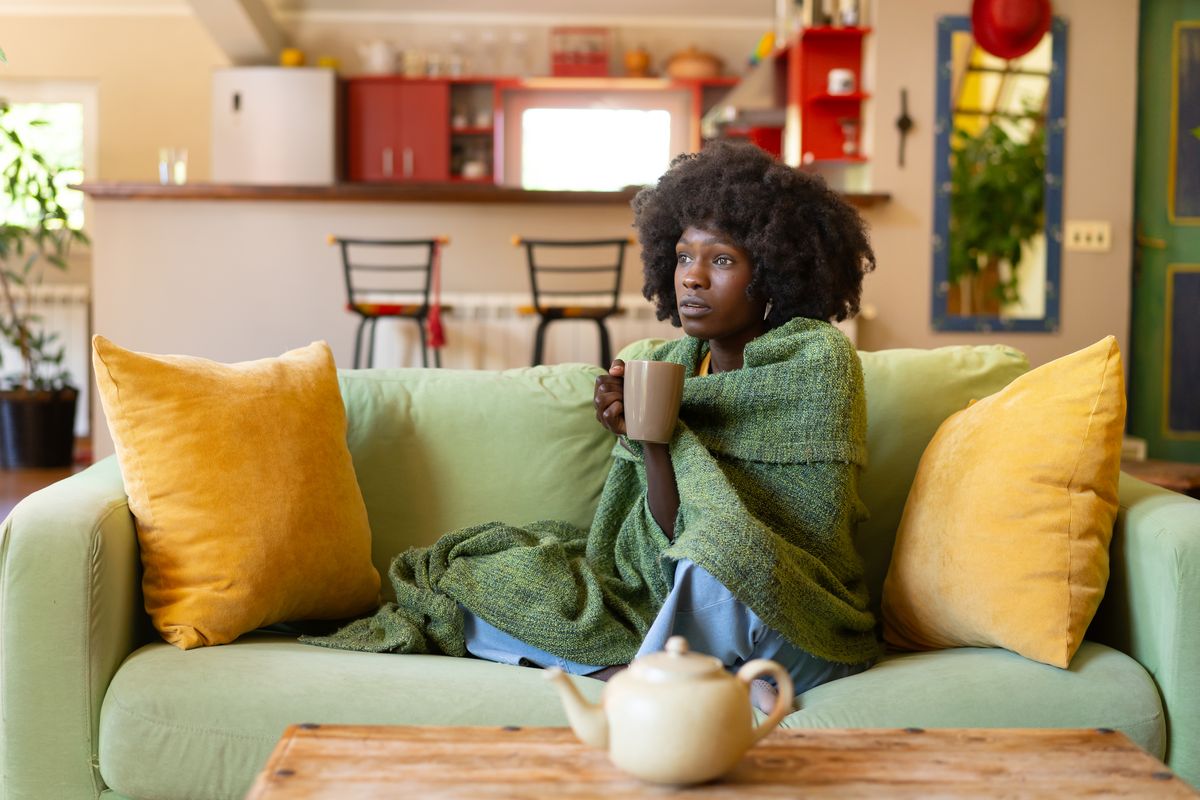As the leaves begin to change color, the air cools, and the days grow shorter, our bodies often go through their own transformations. This change is a natural opportunity to slow down, reflect, and nurture ourselves. Many people may feel a sense of unease or fatigue, but these feelings are part of the body’s natural response to the changing environment.
Our bodies constantly communicate with us, responding to changes like reduced daylight before we consciously notice. You might feel more tired, sensitive, or emotionally heightened as the season shifts. These subtle signals, such as the need for rest and stillness, are your body’s way of adapting. Seasonal depression, also known as Seasonal Affective Disorder (SAD), often affects people during fall and winter when temperatures drop, and sunlight decreases.
According to mental health experts, SAD uniquely impacts Black Americans due to both biological and societal factors. One key biological factor is Vitamin D deficiency, more common in Black individuals because melanin-rich skin requires more sunlight to produce adequate vitamin D. As psychotherapist Farah Harris explains, the lack of sunlight during the colder months can significantly affect mood in Black Americans, making them more vulnerable to SAD Depression in Black communities often manifests differently than in other groups, leading to underdiagnosis. The compounded stress of systemic racism and economic disparities further heightens the risk of more severe symptoms. Experts emphasize that increasing awareness about SAD in Black Americans can help create culturally relevant mental health solutions. SAD presents unique challenges for Black Americans, but by tuning into our bodies and honoring our needs, we can find ways to manage symptoms and seek comfort during the colder months. Through a blend of self-care practices and supportive community connections, it’s possible to ease symptoms as we move through this season.
Honoring your body’s need for rest
When we give ourselves permission to rest and adjust to the season, we allow the body to align with nature’s rhythms. This can create a balanced state, both physically and emotionally. Incorporate rest into your routine, whether it’s sitting quietly with a cup of tea or admiring nature. Supporting your body with consistent bedtime rituals like a warm bath or gentle movement can help you wind down, release tension, and prepare for restful sleep. Additionally, warming soups or stews and herbal teas can bring comfort and help your body adjust.
Creative and soul care
When outdoor activity is limited, creativity becomes essential for expression and mental relief. Engage in art projects or crafting, which provide an outlet while keeping your hands busy. Combine this with music and movement – whether dancing or swaying to rhythms that lift your mood. Reading for pleasure also offers a break from stress, and vision boarding helps focus your intentions for the season. Meditation and visualization focused on warmth and renewal can shift your mindset during darker, colder days.
Community and
collective care
While personal nurturing is important, collective care is essential for Black and Brown communities. Community care, leaning on and supporting those around you is vital, especially during seasonal changes. As Dominique M. Brown highlights in her work on somatic experiences and African ascendance, the strength of communal ties can nurture us during transitions. Whether through small gatherings, shared meals, or simply being with loved ones, community care helps break the isolation that often accompanies seasonal depression. As autumn fully begins, remember that caring for and honoring your body’s need for rest, nurturing your mind and soul, and leaning on the community for support can help us adjust to the new season.
